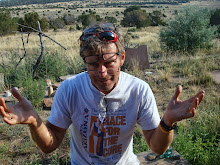Wednesday, February 4, 2015
Beneath the Wheels
Sean took me to see the other San Diego last Saturday.
We left the beach area, the La Jolla / Scripps dreamland and went south and inland, past the airport, the harbor. We rode our bikes down to the loading docks, the bridges, the industrial parts of the city.
Like many cities, San Diego is divided between the haves and have nots. Not surprisingly, the haves get to tell their side of the city story more than the others. San Diego, to outsiders, is beach houses, surfing, sunsets, recreation on bikes, skate boards, boats, hang gliders, fast cars, scuba.
It's a fit man's paradise of tight, tanned asses and tidy utopias. Milk, honey, and money.Ego, self-absorption, Me-Me.
Of course, there are other stories, other San Diegos. Somebody has to work once in a while, after all. For so much wealth to collect at the upper crust, some has to be funneled from down below.
There are tents belonging to homeless people on the sidewalks near the stadium. Hookers flirt with drug dealers in sleek cars with dark tinted windows. Drud addicts lie on the sidewalk, filthy with the grime of the streets and their bodily secretions.
The dream didn't work for them.
And then there are the activists, the ones who work with the invisible San Diego. One of their projects, an attempt to tell the story that is seldom told is in Barrio Logan, Chicano Park. There, artists have put together images that show struggle for a place to stand, a working wage, decent education, an identity for the invisibles.
Some of the murals tower over viewers on columns that support the Coronado Bridge. They are powerful in color and design, with messages of action, character, and work. They are not the ethos of fun and privilege. These are the stories of the marginalized, the outsiders, the underclasses.
But they are also beautiful, erotic, and portray the many forms love can take. The art shows possibility in alternatives, asks the viewers to imagine potential.
Interestingly, the park was quiet, except for some men pushing shopping carts or bikes loaded with the supplies necessary for life on the streets. I saw no tourists other than us, no photographers, no elite museum patrons. The common good seems very out of fashion here in So-Cal.
The quality of the murals was the equal of those I have seen at the Museo be Bellas Artes in Mexico City, but no entry fee was charged here.
This art required scaffolding, prep work, paint, skill, and long days of hard work, yet they stood here, outside, free for the taking.
And few seemed to care.
I guess that says something about power and how we view the possibility of social change.
The artists and activists are my heroes. They carry on against a stream of thought that is all but impossible to overcome. They swim up the stream fed by privilege, wealth, advertising, powerful narratives of corporate control.
Power does rest with the people, they say.
It's waiting there for us when we wake up, when we remember, when we can't take the injustice any more.
Subscribe to:
Post Comments (Atom)




No comments:
Post a Comment